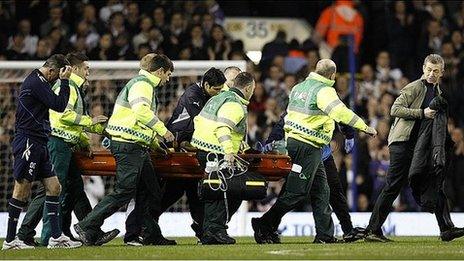Christian Eriksen: What can cause a cardiac arrest?
- Published
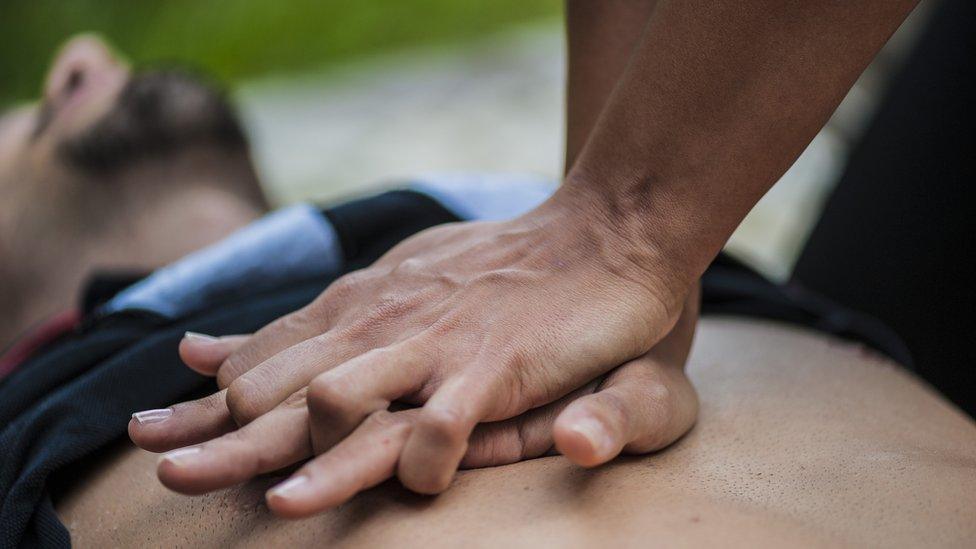
When the heart stops suddenly, it's critical to start chest compressions quickly and then shock the heart with a defibrillator
Danish footballer Christian Eriksen has spent his third night in hospital having tests, following a cardiac arrest during a European Championship match on Saturday.
But doctors are still no clearer as to why his heart stopped suddenly - and looking for the cause is now a priority.
"It was a 29-year-old fighting for his life," Prof Sanjay Sharma, cardiologist and chairman of the Football Association's expert cardiac committee, told the BBC.
"We now need to try to find out what actually happened."
One of the most common causes of a cardiac arrest, external is a life-threatening abnormal heart rhythm, according to the British Heart Foundation (BHF).
Other causes include cardiomyopathy - a disease of the heart muscle affecting its size, shape or thickness, which can be inherited - and acute myocarditis, or inflammation of the heart muscle.
Complex scans of Mr Eriksen's heart will now be being carried out to detect very subtle scars or abnormalities - something which regular screening of league footballers' hearts may not have picked up, Prof Sharma said.
These tests are mandatory in the UK, happening every two years from the age of 16 to 25.
They look for anything suspicious in the way the heart functions and its structure - but despite the best efforts of doctors, these tests are not a 100% guarantee that underlying problems will be found.
How to use a defibrillator and save a life
"These conditions don't always show up in adolescence or in 16 to 25-year-olds," Prof Sharma says.
"They may not start to show until their mid-20s or 30s."
Sometimes abnormalities only occur when footballers are mid-match, or they could be linked to another recent illness which may have stressed the heart.
If and when problems are identified, some can be fixed or treated - but others remain irreversible or incurable.
A cardiac arrest occurs when the heart suddenly stops pumping blood around the body, starving the brain of oxygen and leading someone to fall unconscious and stop breathing.
It is different to a heart attack, which occurs when the blood supply to the heart muscle is cut off, often because of a clot in one of the coronary arteries.
'Rare incidents'
Mr Eriksen is not the only footballer to have suffered a cardiac arrest. In 2012, another footballer, Fabrice Muamba, collapsed on the pitch and his heart stopped for 78 minutes. Marc-Vivien Foe died while playing for Cameroon aged 28, and former England defender Ugo Ehiogu, who was a Spurs coach, died in 2017, aged 44.
"Extreme exercise puts athletes at increased risk because they stress their hearts harder - and that's more likely to trigger an issue," says Dr Zafar Iqbal, head of sports medicine at Crystal Palace Football Club.
"But these are very rare incidents," he adds.
Cardiac arrests can happen to anyone at any time - not just fit footballers.

A cardiac arrest occurs when the heart suddenly stops pumping blood around the body, leading someone to stop breathing
Every week in the UK, 12 people aged under 35 die from sudden cardiac arrest.
And in the UK each year, 30,000 cardiac arrests happen outside of hospitals - all requiring emergency resuscitation, with just one in 10 people surviving.
Footballers' hearts tend to be larger and work more efficiently than other people's, which puts them at very low risk of other heart problems such as cardiovascular disease or blocked arteries, often seen in smokers or unhealthy eaters.
But if additional stress is put on the heart from dehydration, heat or a recent illness, that could have an impact.
'Every second counts'
Dr Iqbal says it was crucial that CPR (cardiopulmonary resuscitation), external was started straight away on Mr Eriksen, followed by use of an AED (automated external defibrillator), and it is a technique everyone should know how to do.
He would like to see defibrillators, which use an electric shock to the heart, installed in every secondary school.
"Every minute of delay reduces the chances of survival by 10%," he says.
Performing CPR can more than double a person's chances of survival in some cases.
"Every second counts when someone suffers a cardiac arrest - the more of us that know how to perform CPR, the more lives that can be saved," says Dr Sonya Babu-Narayan, consultant cardiologist and associate medical director at the BHF.
Defibrillators are often located in workplaces and places like airports, shopping centres, and community centres.
Anyone can use them, and experts stress that there is no way of using them wrongly.
The defibrillator will only deliver a shock if it's needed, after automatically assessing someone's heart rhythm.
Related topics
- Attribution
- Published13 June 2021
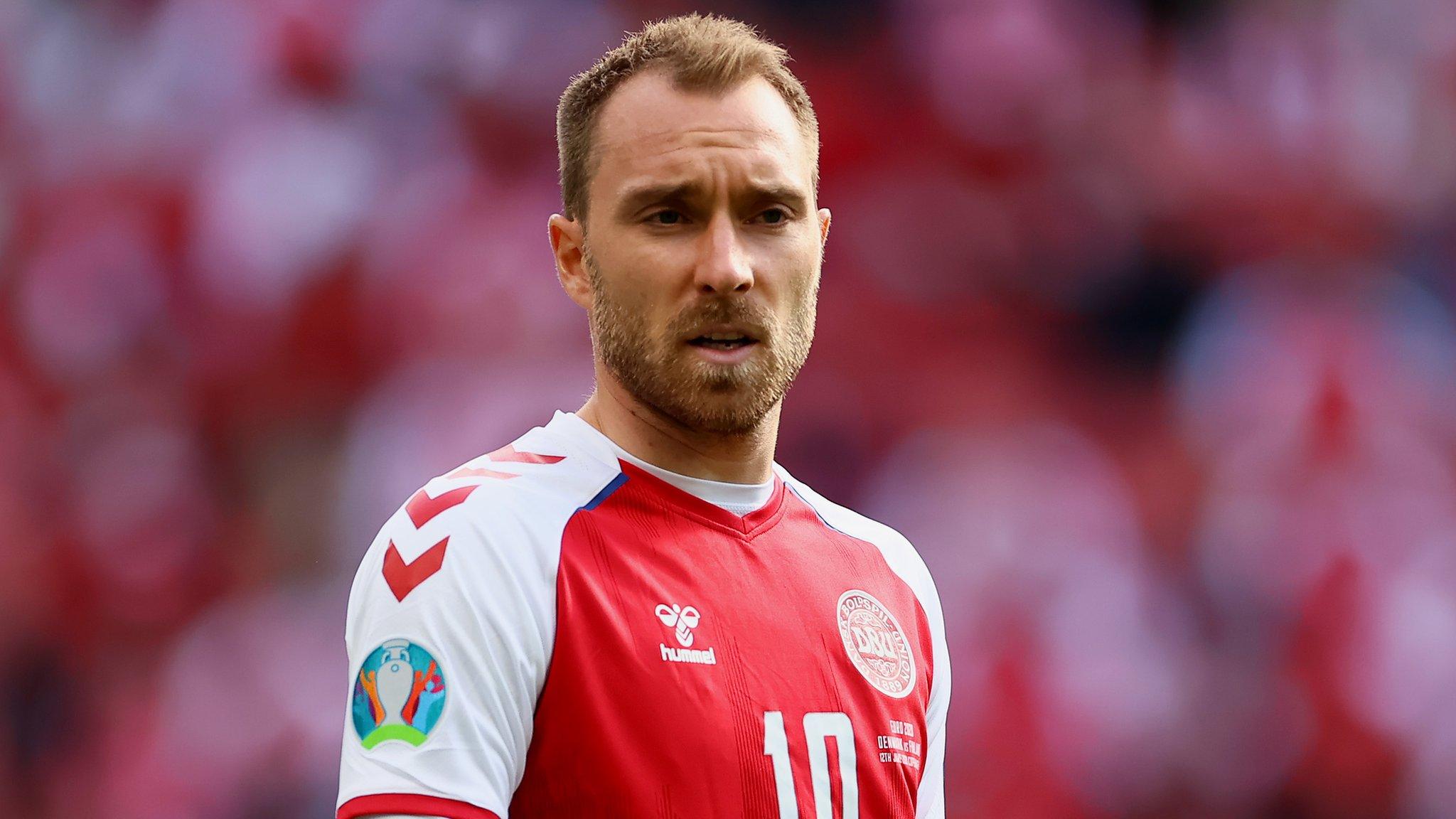
- Published14 June 2021
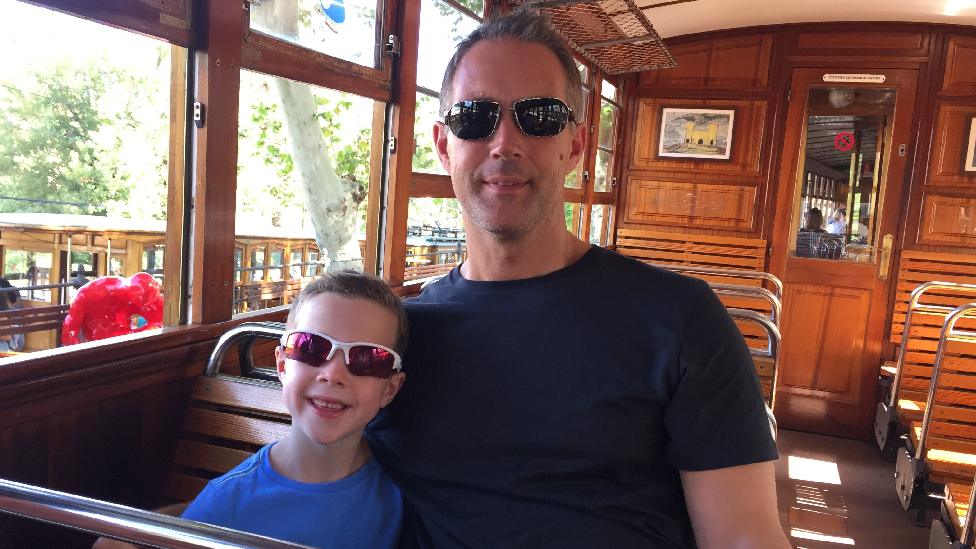
- Published23 August 2021

- Published8 August 2018

- Attribution
- Published21 March 2012
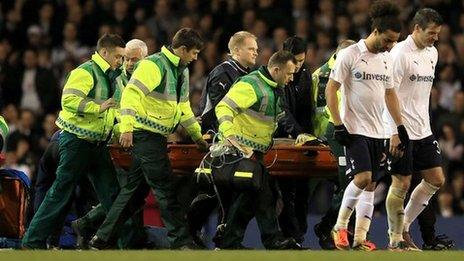
- Attribution
- Published22 March 2012
